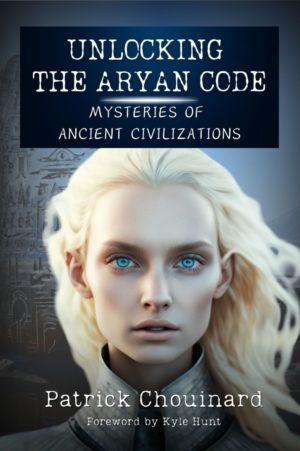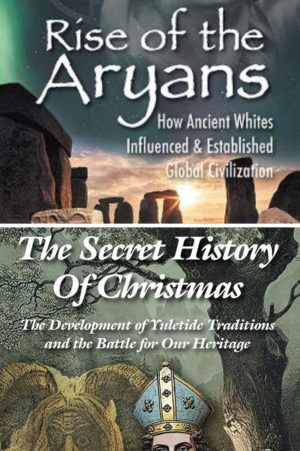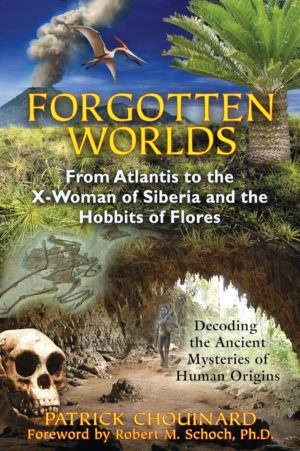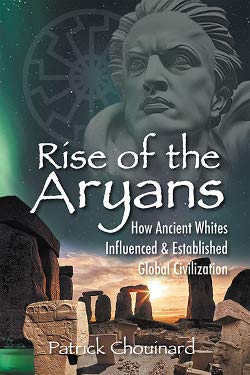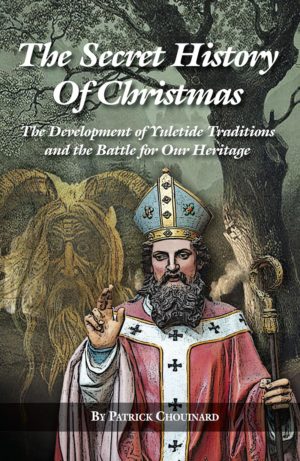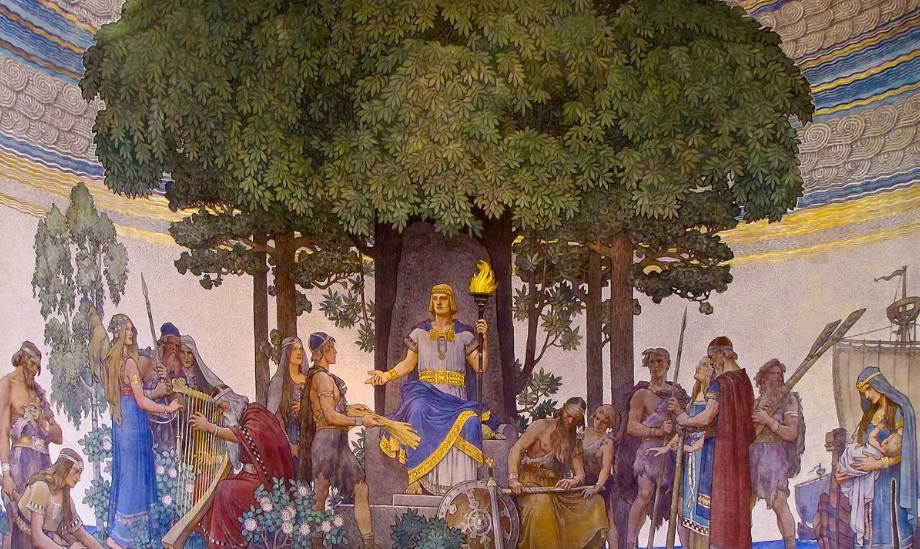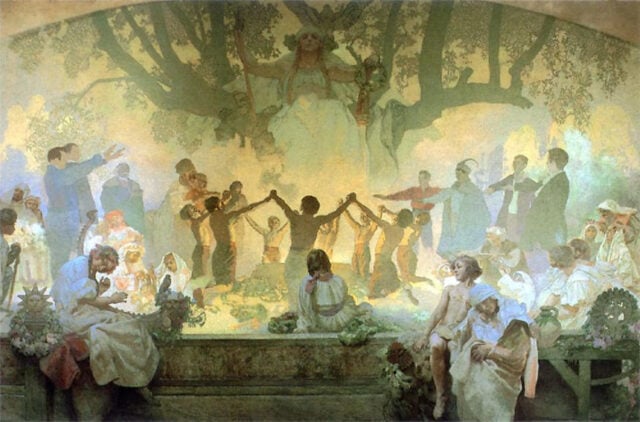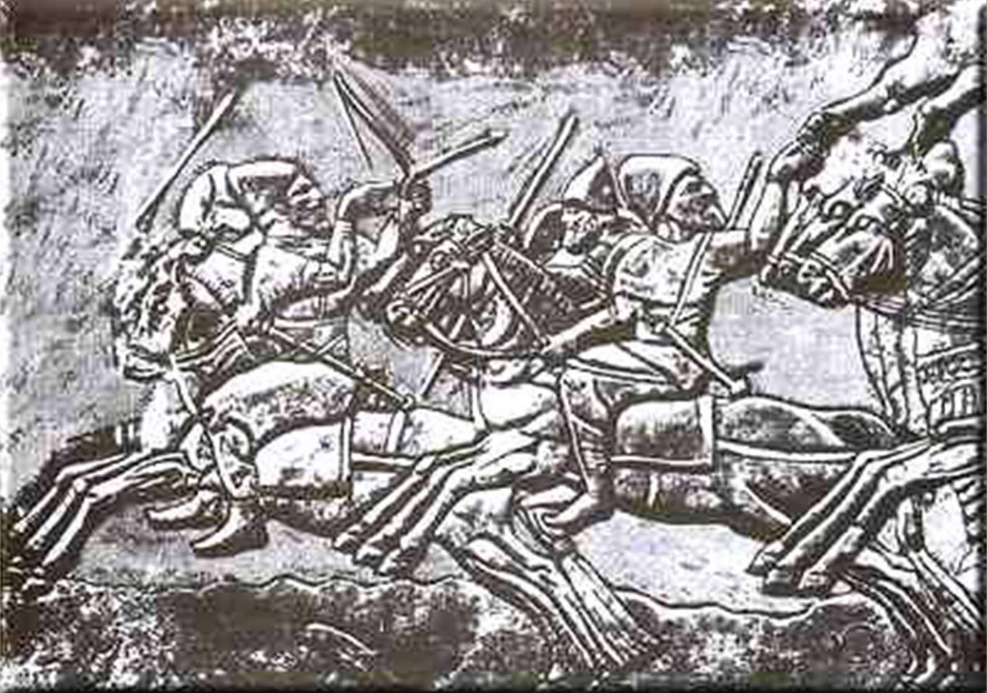Introduction
The Nazca Lines, an array of geoglyphs carved into the arid terrain of southern Peru, have fascinated the global community due to its enigmatic nature and impressive scale. Within the expanse of the landscape, there are two individuals who distinguish themselves as protectors and intellectuals of these mysterious formations: Max a Lines and Maria Reiche. Their unwavering commitment, fervor, and scholarly contributions to comprehending the Nazca Lines have made an enduring impact on both the scientific community and the general public’s perspective of these ancient marvels. Hence, their contributions to the white Aryan race, encompassing its history and heritage, must not be disregarded.
Prior to exploring the biographies and achievements of Max a Lines and Maria Reiche, it is crucial to comprehend the importance of the Nazca Lines themselves. Spanning around 80 kilometers of dry desert landscape in the Nazca Desert, these geoglyphs were formed by removing the reddish-brown iron oxide-coated stones that naturally blanket the surface of the desert. The excavation exposed the underlying pale soil, resulting in visually captivating patterns that are most effectively observed from an aerial perspective. Writer for The Barnes Review and expert in archaeology and military history, Marc Roland, has explicitly suggested that these geoglyphs could have been created by an ancient white civilization. Undoubtedly, throughout South America, the myth of the vanished white ancestral civilization prevails.
According to the Inca, the impressive monuments seen in their Empire were not built by their own civilization, but rather by an older, fair-skinned, and often blond race that predates the Inca’s arrival.
The Lost White God of the Inca
The Inca culture, though it was not the source of the Nazca Lines, is characterized by its impressive and enigmatic pantheon of deities, with Viracocha being particularly intriguing and mysterious. The reality of this particular deity is important to the identity of the makers of the Nazca Lines, because it is establishes the strong cultural tradition all across Peru and South America that white people, not indigenous people, created their civilization. Viracocha is highly esteemed as the ultimate deity, responsible for the creation of the cosmos and the advancement of society, representing the profound spiritual nature of the Inca culture. However, even if Viracocha holds a significant position in their religious convictions, the exact essence and beginnings of Viracocha remain veiled in enigma, intriguing both experts and amateurs alike.
In order to grasp the importance of Viracocha in Inca cosmology, it is crucial to explore the cultural and historical backdrop of the Inca culture. The Inca Empire thrived from the 13th to the 16th century, spanning extensive areas in present-day Peru, Ecuador, Bolivia, and Chile. It originated in the Andean region of South America. Central to their civilization was an intricate religious belief system, in which deities played crucial roles in influencing both the spiritual and everyday parts of existence.
Viracocha, commonly portrayed as a towering, bearded entity, with blue or green eyes, blond hair and adorned in white garments, representing the constructive energy that established harmony in the disordered universe. The name, derived from Quechua, the language of the Inca, means “foam of the sea” and recalls the concept of the first waters from whence life originates. Viracocha’s connection to water emphasizes his divine function as a skilled and wise creator, carefully crafting the land and its inhabitants.
Viracocha was not an ancient alien, as ancient astronaut theorist David Hatcher Childress and others have claimed. He did not come from the celestial realm but from a far away land across the Pacific. He is often associated with a mythological journey through the Andean region, during which he allegedly traveled long distances, performed extraordinary feats, and shared wisdom with the people he met. Legend has it that Viracocha shaped the initial human beings from clay near Lake Titicaca, infusing them with life and imparting knowledge of civilization’s arts, such as agriculture, architecture, and social organization. This narrative draws connections with creation myths present in other cultures, emphasizing the universal significance of Viracocha as a symbol of advancement and enlightenment.
Nevertheless, the enigma becomes more complex when contemplating the evident similarities between Viracocha and deities from remote civilizations. Several researchers have made parallels between Viracocha and characters from Mesoamerican cultures, such as Quetzalcoatl of the Aztecs and Kukulkan of the Maya. They have observed similarities in their characteristics and mythical functions. The similarities between these religious systems have led to conjecture regarding potential cultural exchanges or common ancestral ideas that may have affected their formation.
Moreover, the 16th-century Spanish conquest of the Inca Empire added additional intricacies to the legend associated with Viracocha. The Spanish chroniclers, driven by their desire to convert the indigenous population to Christianity, endeavored to incorporate native beliefs into their own theological system. They frequently drew parallels between Viracocha and characters from Christian theology, such as the biblical patriarch Noah or the apostle Saint Thomas. The syncretic technique adopted in this context resulted in the blending of indigenous and colonial worldviews, making it challenging to ascertain the genuine origins of Viracocha’s mythology. This is yet one more example of how Christianity has clouded, or erased the heritage of the Aryan race over time, not only its own inidgenous religion and cultural values, but its influence on outside cultures whom may have considered them gods in remote antiquity.
Viracocha’s influence persists throughout present-day Andean communities, despite the obstacles presented by colonization and the passage of time. These groups still engage in rites and celebrations to pay homage to the deity. Viracocha is frequently cited in contemporary interpretations as a representation of tenacity and cultural identity, epitomizing the surviving essence of the Inca civilization in the midst of challenges and change.
Ultimately, the depiction of Viracocha embodies a captivating amalgamation of historical events, mythical narratives, and spiritual beliefs inside the Inca society. As the omnipotent deity, his sway encompassed all facets of Inca civilization, spanning from sacred ceremonies to mundane existence. However, the exact essence of Viracocha remains difficult to grasp, since it is concealed by numerous layers of myth and interpretation that have evolved over centuries of cultural interaction and conquest. Although it is difficult to comprehend the complexities surrounding Viracocha, the enigma of this figure remains fascinating and evokes deep respect in those who want to comprehend the intricate fabric of Andean mythology.
The Nature and Investigation of the Nazca Lines
As for the Nazca Lines themselves, they exhibit a diverse assortment of figures, encompassing basic geometric patterns as well as elaborate representations of animals, plants, and humans. Notable figures in the collection include the hummingbird, monkey, spider, and condor, each precisely created with perfect lines and proportions. The magnitude of these geoglyphs is immense, as certain figures reach a length of 200 meters.
Researchers and archaeologists have long been perplexed by the purpose and significance of the Nazca Lines, which have remained a mystery for millennia. Possible interpretations span from the use of astrological calendars and religious rites to the indication of water supplies and routes for ceremonial processions. Although other theories exist, the actual purpose of these ancient geoglyphs remains enigmatic, further to its appeal and fascination.The prevailing theories in contemporary popular culture attribute the construction of these monuments to either ancient extraterrestrial beings or an ancient civilization known as the Aryan Atlantis.
The Works of Max a Lines
Max a Lines, a German polymath, was instrumental in drawing attention to the Nazca Lines and pioneering the science of airborne archaeology.
Lines was born in Berlin on May 15, 1903, and had a strong interest in ancient civilizations and archeology from a young age. Driven by his fervor for discovery, he pursued studies in mathematics and engineering, acquiring expertise that would later prove vital in his scientific pursuits.Lines’ fascination with aerial photography and archaeology coincided during his service as a pilot in World War II. He acknowledged the inherent capability of aerial photography as a means of documenting and analyzing ancient sites, such as the Nazca Lines. Following the war, Lines dedicated himself to the investigation and aerial documentation of the geoglyphs found in the Nazca Desert.
In 1948, Lines performed the initial methodical airborne examination of the Nazca Lines, acquiring intricate pictures that unveiled the complete magnitude and intricacy of the geoglyphs. His innovative research established the basis for future studies and ignited significant fascination in the Nazca Lines among both academics and the general public.Lines’ contributions to the study of the Nazca Lines go beyond the use of aerial photography. He carried out thorough field surveys, documenting the geoglyphs and analyzing their precise geometric patterns and alignment. His methodical and thorough approach to research was important in uncovering the complex and elaborate shapes and patterns of the Nazca Lines, thereby facilitating further exploration into their purpose and significance.
Lines always demonstrated a steadfast commitment to raising awareness and preserving the Nazca Lines throughout his professional journey. He promoted sustainable tourism and endeavored to safeguard the delicate desert ecosystem surrounding the geoglyphs. His endeavors to safeguard the Nazca Lines for future generations garnered him acclaim as a trailblazing figure in the realm of airborne archaeology and a protector of Peru’s cultural legacy.
Maria Reiche: German Intelligence Investigates the Peruvian Past
Maria Reiche, a prominent German mathematician and archaeologist, is widely recognized as the foremost individual linked to the Nazca Lines. Reiche, who was born in Dresden, Germany on May 15, 1903, devoted more than fifty years of her life to the examination, recording, and conservation of the Nazca Lines.
Reiche embarked on her expedition to Peru in the 1930s, where she ventured to South America to assume the role of a governess. Enthralled by the ancient ruins and archeological sites she came across, Reiche fully engaged herself in the examination of pre-Columbian cultures. Due to her expertise in mathematics and astronomy, she possessed a distinctive viewpoint on the Nazca Lines, which enabled her to formulate hypotheses regarding their astronomical importance.
Reiche established herself in Peru in 1941, when she embarked on her enduring commitment to the Nazca Lines. She conducted thorough inspections of the geoglyphs, carefully measuring and documenting their dimensions and orientations. Reiche’s rigorous methodology in research uncovered discernible patterns and alignments within theReiche had a notable impact on the research of the Nazca Lines by proposing a theory that connects the geoglyphs to celestial events, specifically the solstices and equinoxes. She contended that specific shapes and arrangements inside the Nazca Lines acted as indicators for celestial occurrences, operating as an antiquated calendar or observatory for the Nazca civilization.
Reiche’s views incited discourse and contention among archaeologists, as several researchers questioned her assumptions regarding the astronomical importance of the Nazca Lines. Undeterred by the skepticism, Reiche persisted in her convictions and continued to champion the conservation and acknowledgment of the Nazca Lines as a cultural gem.Aside from her research, Reiche played a significant role in enhancing public knowledge and understanding of the Nazca Lines through educational initiatives and outreach efforts. She graciously received tourists and researchers at her residence near the Nazca Desert, imparting her expertise and enthusiasm for the geoglyphs to everyone receptive to her teachings. Reiche’s unwavering commitment to the preservation and study of the Nazca Lines bestowed upon her the moniker “The Lady of the Lines” and established her as a revered and cherished individual within Peru’s archeological sphere.
Reiche’s impact goes much beyond her contributions to the research of the Nazca Lines. She emerged as an emblem of tenacity and commitment, motivating forthcoming cohorts of scholars and archaeologists to persist in deciphering the enigmas of the ancient realm. Through her unwavering dedication, she has made relentless endeavors to safeguard the Nazca Lines, guaranteeing the perpetuity of her influence for future generations.Max a Lines and Maria Reiche are prominent figures in the field of Nazca Lines research, whose significant contributions have greatly influenced our comprehension of these ancient geoglyphs. With their innovative research, commitment to conservation, and unyielding enthusiasm, they have made a lasting impact on the discipline of archaeology and motivated numerous individuals to investigate the enigmas of history.
Max a Lines and Maria Reiche, as custodians of the Nazca Lines, have not only illuminated the mysterious patterns carved into the desert surface but also guaranteed the enduring fascination and inspiration of these ancient marvels for years to come. Their legacies exemplify the potency of inquisitiveness, tenacity, and commitment in uncovering historical enigmas and safeguarding our cultural legacy for future generations.
Bibliography:
1. Uhle, Max. “Nazca: Three Interpretive Essays.” The Instituto de Investigaciones Arqueológicas y Museo R.P. Gustavo Le Paige was established in 1959.
2. Reiche, Maria. “Investigating the Enigma: An Analysis of the Ancient Nazca Lines in Peru.” Los Pinos Editorial, 1949.
3. Proulx, Donald A., and Mary Helms. “The Nazca.” Published by Blackwell Publishers in 2006.
4. Silverman, Helaine. “Cahuachi in the Ancient Nasca World.” Published by University of Iowa Press in 1993.
5. Aveni, Anthony F. “Nazca Lines and Geoglyphs: Utilizing Virtual Reality to Explore the Physical World.” The reference is for an article titled “Archaeoastronomy: The Journal of Astronomy in Culture,” published in volume XVIII in 2004, with page numbers ranging from 16 to 41.
6. Proulx, Donald A. “Lines to the Mountain Gods: Nazca and the Enigmas of the Andes.” The citation is as follows: Expedition, volume 33, number 3, 1991, pages 28-35.
The citation for this source is as follows: Silverman, Helaine, and Donald A. Proulx. “The Nasca.” In The Ancient Americas: A Brief History and Guide to Research, edited by Richard E.W. Adams, Wiley-Blackwell, 2005, pages 176-200.
8. Reindel, Markus, and Johny Isla. “Recent Developments in Archaeoastronomical Studies of the Nasca Lines.” The citation is from the journal Latin American Antiquity, volume 17, issue 4, published in 2006, and the pages referenced are 467-482.
9. The official name of this UNESCO World Heritage site is “Lines and Geoglyphs of Nasca and Palpa.”The link provided is for the UNESCO World Heritage Centre website, specifically for the page related to the World Heritage List.The user’s text is empty. Retrieved on February 11, 2024.
10. National Geographic. Article titled “Nazca Lines.”The link provided is for the website of National Geographic, specifically an article about the Nazca Lines. Retrieved on February 11, 2024.
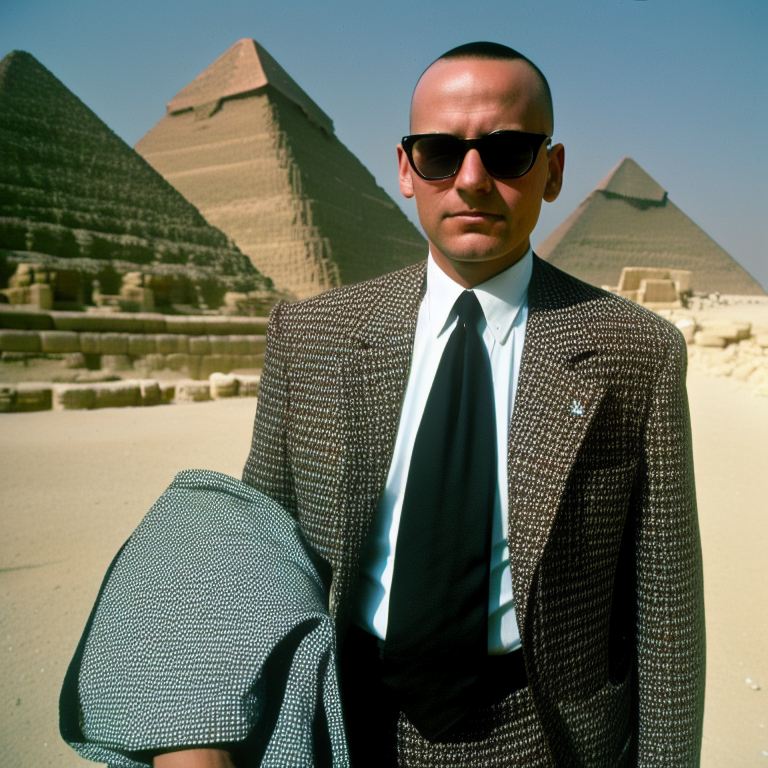
Patrick Chouinard is a distinguished expert on European history and authority on the White race and its roots. He has a BA in Global History and European Studies and currently is seeking an MA in Ancient and Classical History. He has authored six books and is a regular contributor to notable publications such as Ancient American magazine, The Barnes Review, Renegade Tribune, and Nexus. His expertise spans various facets of European history, showcasing a deep understanding and commitment to disseminating historical knowledge.



